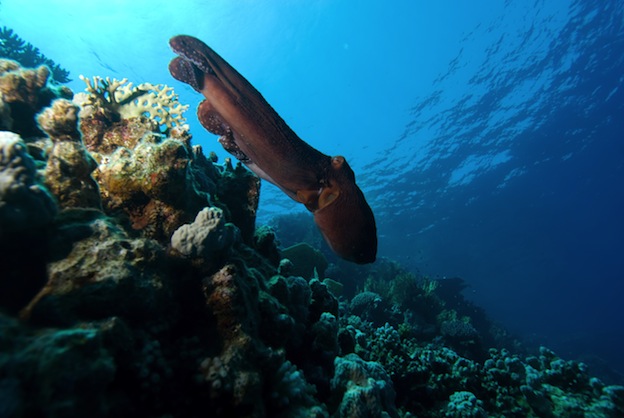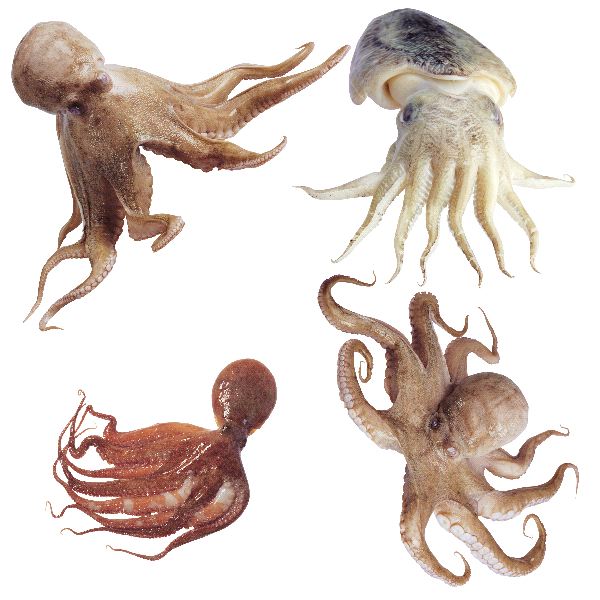North Pacific Giant Octopus – Enteroctopus dofleini
Description
The winner of being the largest of all Octopus species in the world is the North Pacific Giant. This one can be close to 150 pounds when it is fully mature and be as long as 15 feet. When you consider that some species are only a few inches in length and weigh a couple of ounces there is a huge difference. The overall size of these octopuses really depends on the location where they live and what they feed on there.
You may read stories out there about some being much bigger than that. While those stories do continue to circulate they haven’t been verified. However, many experts don’t doubt at all that they can grow to be quite a bit larger than what we have recorded. Since they can blend into their surroundings so easily it can be very easy to miss one when it is right in front of you.
The ability to change colors due to pigmentation is very easy for this particular species. Since they can’t move as quickly or fit into small crevices they use the changing of color to blend in and to avoid being detected. They are normally a shade of red or brown and they can be light or dark. Yet due to their many habitats, they can be just about any color.
Anatomy
The anatomy of a North Pacific Giant Octopus is very interesting. They tend to lie flat often on the bottom of the ocean so they seem to be like a tan starfish. It is this blending in though that makes them able to avoid detection from various types of predators.
They have very long arms that are also thick. Along the length of them are many suction cups.
They have a head that is quite large compared to other species of Octopus. They have a mantle part of the body that is spherical in design. This is part of what helps them to be able to move around effortlessly.
Evolution
No one really knows for sure what has occurred throughout time for the North Pacific Giant Octopus to take on the role that it has. There is only speculation about how they have changed from millions of years ago until the present. It is strongly believed though that they have been able to continually adapt to their changing environment. The development of so many arms may be directly linked to the evolution process for them.
The Octopus – Amazing Features – Read Or Listen To The Article Click Here
Three hearts, a massive brain, and blue blood, they navigate unlike anything else. The earliest octopus fossil is Pohlsepia, which swam the oceans 296 million years ago.
Behavior
We don’t have very much information at all about the North Pacific Giant Octopus when it comes to their behavior. What we do know about them is that they have the ability to learn new things all the time. They can adapt to a changing environment through their learning skills. They are able to solve problems and they have excellent memories.
They do seem to spook easily and since they can’t move as fast as other species of Octopus they will release ink to getaway. They seem to do this more often than other species of Octopus and they also produce a larger volume of the dark ink because they have bigger glands for the production of it.
Habitat/Distribution
The North Pacific Ocean is home to this species of Octopus. They tend to live about 200 feet below the surface of the water. Yet they have been found to live deeper and that is believed to be due to the changes in their environment. When they don’t have enough food to eat or they can’t find shelter then they will move deeper in order to have those basic needs met.

Diet/Feeding Habits
They spend most of their nighttime hours looking for food. The drawback of being a larger species is that you have to eat more to have energy. There is usually no problem though for the North Pacific Giant Octopus to find more than enough to eat in their natural environment. Some of their common items include fish, crabs, clams, and shrimp.
You may find it hard to believe but they have also been known to consume some of the small species of sharks out there. This can offer them a great meal and one that means they don’t have to hunt anymore for a day or two. They are opportunistic so they will do what they can to benefit as those chances for great meals happen to come their way.
The fact that they can consume these sharks has been verified through the stomach contents of some that have been captured in nets or killed accidentally. Without that type of information to verify it though this would continue to be considered a myth. The fact that they can consume small sharks really shows us how powerful the North Pacific Giant Octopus can be.
Reproduction
Mating is about the only time that the male and female North Pacific Giant Octopus come into contact with each other. The process of mating involves the male taking a sperm sac from his body and placing it into the mantle of the female. This sac has a very thick protective coating on it because she may carry it around for about six months before her eggs are ready to be deposited.
There is also lots of sperm in that sac because she will need to allocate it among approximately 100,000 eggs. That process can take her many weeks to complete and it will consume every bit of her time. The role at that time switches from her own needs to protect the eggs at any cost. She will do all she can to keep them clean and to keep predators at bay.
Around the same time that her eggs hatch she will be at the end of her life span. For the males, they will die very soon after mating. The life span is prolonged for the female to give her time to pass on survival to the next generation. Even in the best of conditions this species of Octopus doesn’t live more than 3-5 years. Yet that is considerably longer than many species with a life span of less than one year.
These offspring are extremely small at birth but have the ability to swim and to be able to find food. Yet they are also highly regarded as a source of food by predators out there. Out of those 100,000 eggs, only about 1,000 of them will survive the first few months of life. Even less than that will reach the age of maturity.
Read Or Listen To The Article Click Here.
Predators
Even though this is a large-sized Octopus that doesn’t make it exempt from predators. In fact, there are some large ones out there that find it to make a very nice meal. Among them include Sperm Whales, Sea Otters, and Harbor Seals. It really depends on the location where the happen to live.
Humans do find capturing them to be ideal due to their size. They can offer quite a large amount of meat to be used for various types of food dishes. They also like to get rid of these creatures in the water because they consume many of the other creatures that they are trying to commercially harvest. Even so, there doesn’t seem to be a problem when it comes to their overall numbers remaining out there.
Please help us share knowledge about Octopuses.
Knowledge creates awareness about the astonishing wildlife around us.









Thanks so much for octopus info. They are incredible creatures. Also I love the first photo as I have been wanting to do a painting on my garden wall to be with the dolphins I painted earlier.